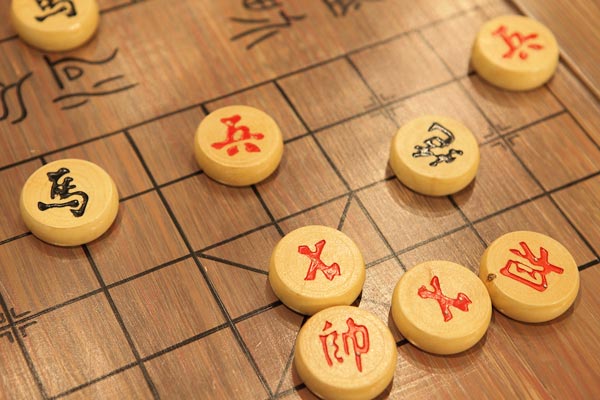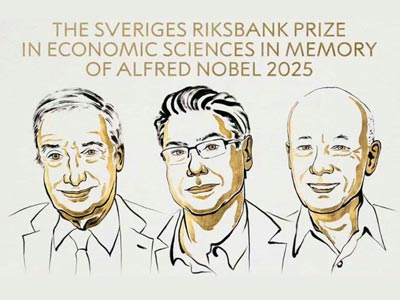Suzhou embroidery, a general term for embroidery products in Suzhou, is a traditional folk art of Suzhou City, Jiangsu Province. It is one of the four famous embroideries and one of the national intangible cultural heritages.
Suzhou embroidery originated in the Wu County area of Suzhou, and has now spread to Wuxi, Changzhou and other places. Embroidery is inseparable from sericulture and silk reeling, so embroidery, also known as silk embroidery. During the Qing Dynasty, “Suzhou embroidery, Hunan embroidery, Cantonese embroidery and Shu embroidery” were established as the four most famous embroideries in China. The Qing Dynasty was the heyday of Suzhou Embroidery, which can be described as a proliferation of schools of thought and a competition of famous artists. Suzhou embroidery has a unique style of beautiful patterns, ingenious ideas, meticulous embroidery, lively needlework, elegant colors, and strong local characteristics. Suzhou embroidery to Suzhou Embroidery Institute of High-tech Zone of Zhenhu Town (now changed to the street) embroidery is the most famous. Zhenhu is the main birthplace of Suzhou embroidery, and 80% of the products in Suzhou embroidery come from Zhenhu.

On May 20, 2006, Suzhou embroidery was approved by the State Council of the People's Republic of China to be included in the first batch of national intangible cultural heritage list, with heritage number VII-18.
Suzhou embroidery has a history of more than 2,000 years. Legend has it that it originated from Zhongyong's granddaughter, “Nihong”, who was the first to make embroidered clothes. In ancient times, Tai Bo and Zhong Yong, the sons of King Gugong Danfu of the Zhou Dynasty, came to the area of Suzhou in the south of the Yangtze River to establish the state of Wu, where it was customary for the local people to cut off their hair and tattoo their bodies. When Zhong Yong became the monarch of Wu, he wanted to break this custom, so he discussed it with the elders. Unexpectedly, their discussion was overheard by his granddaughter, Daughter Hong, who was sewing a garment. She was sewing and listening, lost in thought, accidentally, the hand was pinned, a small drop of bright red blood immediately soaked into the material, gradually fainted into a small flower, so the female red inspiration: the dragon pattern embroidered on the clothes in lieu of tattoos. In order to commemorate the inventor of the embroidery Zaoqian persuaded to identify the embroidery of the people to give the boat and Kedian pay, folk still women engaged in weaving, sewing, embroidery and other activities known as the “women's red”.
As early as in the Three Kingdoms period (220 ~ 280 AD) on the production of Su embroidery records, with a long history of thousands of years of Su embroidery, the bones of its charm in the Sui and Tang dynasties has laid the foundation, until the Song and Yuan its basic techniques and features have been gradually formed, the Ming and Qing dynasties to the down of the art of Su embroidery began to mature.

The birthplace of Suzhou embroidery is in the Wu County area of Suzhou, and now it has spread to Wuxi, Changzhou, Yangzhou, Suqian, Dongtai and other places in Jiangsu Province. Jiangsu has fertile land, mild climate, well-developed sericulture, abundant silk production, and has been the home of embroidery since ancient times. Superior geographic environment, rich and colorful brocade, colorful floral line, for the development of Su embroidery to create favorable conditions. According to Liu Xiang's “Saying Garden” of the Western Han Dynasty, as early as in the Spring and Autumn Period more than 2,000 years ago, the State of Wu had already used Suzhou embroidery for clothing.
During the Three Kingdoms era, Wu was already used for clothing. Sun Quan, the king of Wu, once ordered Zhao Da, the sister of the prime minister, to embroider “the map of countries”, embroidered the five mountains, rivers and oceans, cities and towns, rows of formation and other patterns on the square silk, “embroidery of ten thousand countries in a brocade,” he said. Jin Wang Jia “Gleanings - Wu”: “Sun Quan often sigh Wei Shu not razed, the military gap, think of a good painter to make the picture of the mountains and rivers, terrain, military formations like. Da (Zhao Da) is into his sister. Right to write the situation of the nine states square Yue. Mrs. said: 'the color of blue and white, very easy to rest, can not be long treasure; concubine can embroidery, for the countries above the square silk, written to the five mountains, rivers and seas, cities and towns line formation of the shape.' It was completed, and was submitted to the Lord of Wu, which was called 'Needle Extinction'.
Song Dynasty, according to the Qing Secret Collection, “Song embroidery, needle and thread fine, with one or two threads, with needles as thin as hair for the. The colors were exquisite and brilliant. Landscape sub-far near the interest of the pavilion to the depth of the body characters with a view of the vivid feelings, birds and flowers extremely nicknamed bottom gobbling attitude, the best better than the painting is even better.” Can be seen in the Song Dynasty Su embroidery art has a fairly high level.

Ming Dynasty (1368 ~ 1644), Su embroidery has become a common mass of Suzhou area side products, the formation of a “family sericulture, household embroidery” of the situation. Jiangnan had become the center of silk weaving industry. In the art of painting, the Wumen School of Painting, represented by Tang Yin (Tang Bohu) and Shen Zhou, was promoted. Artists combined with paintings for re-production, the embroidered masterpieces are vivid, ink and brush flavor, there is a “needle as a painting”, “skillful experience of the evening cool work,” the name. Since then, the art of needlework, color patterns have formed a unique artistic style, in the art garden, and the art of painting and calligraphy comparable to the competition.
Dream of Red Mansions” 53rd time wrote: ”the original embroidery of the celluloid is also a woman in Gu Su, called Huiniang. Because she is also a family of books and eunuchs, she was skilled in painting and calligraphy, but occasionally embroidered one or two pieces of needlework for fun, not for sale. All the flowers embroidered on this screen are modeled after those of famous artists of the Tang, Song, Yuan and Ming dynasties. Therefore, its format and color are from elegant, originally non-monochromatic craftsman can be compared; each branch of the side of the flower are used by the ancients on the flower of the old sentence, or poetry and song vary, are embroidered with black velvet to grass words, and handwriting hooks and kicks, turn the child seepage store folded, light and heavy, even broken with the pen grass is no different ...... “borrowed from the celluloid embroidered by Huiniang, the brush stroke a turn, wrote out the art of embroidery of Suzhou charm. The art of Suzhou embroidery is written with a twist of the brush.

During the Qing Dynasty (1644~1911), Suzhou embroidery was famous for its “fine and elegant”, and Suzhou was known as the “city of embroidery” at that time. In the mid to late Qing Dynasty, Suzhou embroidery in embroidery technology has further developed, the emergence of new exquisite “double-sided embroidery”, only in Suzhou, a place specializing in embroidery business there are as many as 65.
XI Yongjing wife Zhuge, fifteen years in the return, the widow aunt filial piety. Yongjing day to play Zhouyi, Shi is embroidered Hetu Luoshu Nine Palace Bagua diagrams, warp and weft coquettishly dense ...... (“Suzhou Fu Zhi”) the Qing Dynasty is the heyday of Su embroidery, can be described as a proliferation of genres, the famous hand competing for the show. The royal family to enjoy a large number of products, almost all out of the hands of artists. Folk is more colorful, widely used in clothing, theater clothes, quilt tops, pillow bags tent, cushions, shoes, bags, fan bags and other aspects. These Su embroidery household items are not only a variety of needlework, embroidery, color matching elegant, and the pattern contains festive, longevity, auspicious meaning, loved by the masses. There is also a kind of “painting embroidery”, which belongs to the high-grade appreciation products, called “boudoir embroidery”. History shows that the masterpieces of Qian Hui and Cao Moqin from Wu County, Yang Maojun and Shen Guanguan from Wujiang, and Ding Pei and Xue Wenhua from Wuxi were all famous for a long time.
Especially at the end of the Qing Dynasty and the beginning of the Republic of China, in the trend of western learning and eastward flow, Su embroidery also appeared in the sign of innovation. During the Guangxu period, the skilled artist Shen Yunzhi was famous in Suzhou embroidery world, she dissolved the characteristics of Western painting Xiao Shen simulation in embroidery, and newly created “simulation embroidery”. Guangxu thirty years (1904 AD) Cixi seventieth birthday, Shen Yunzhi embroidered the Buddha and other eight works to celebrate the birthday. Cixi highly appreciated, wrote “longevity”, “blessed” two characters, given to Shen Yunzhi and her husband Yu Jue. From then on Shen Yunzhi changed her name to Shen Shou, and then her works, “Italy Queen Alina statue”, as a national gift to Italy, stirred up the Italian dynasty and the country, “Jesus statue” in 1915 in the United States held in the realm of the Palm A “Panama - Pacific International Exposition” on the First Prize, sold for as much as thirteen thousand U.S. dollars. The American female vobbek statue” to the United States when the exhibition, its unprecedented. Shen Shou's “simulation embroidery” reputation in the soldiers outside, opened up a new page of Su embroidery. Under her advocacy, Jiangsu's suzhou, nantong, danyang, wuxi, changshu and other places were organized training center, embroidery, embroidery trade unions and so on. She has been to Suzhou, Beijing, Tianjin, Nantong and other places to teach apprenticeship, training a generation of new people. Other artists at that time included Hua Ji, Tang Yi Zhen, Li Pei My, Cai Qun Xiu, Zhang Ying Xiu, Jin Jing Fen and so on. Their works won prizes at the “Italy Turang Universal Exposition” (1911), “Panama-Pacific International Exposition” (1915), and “Belgium Universal Exposition” (1930), which won honors for Chinese traditional crafts in the international arena. In the early thirties, Yang Shouyu, the director of the embroidery department of Danyang Zhengze Women's Vocational High School, created the “messy needle embroidery” with vertical and horizontal crossings, different lengths and overlapping layers, which enriched and improved the expressive ability of the art of Suzhou embroidery.
Since the early 1950s, new horizons have opened up for artists to create. Suzhou, Nantong, Changzhou, Wuxi, Yangzhou, Dongtai and other places have set up research institutions or factories so that artists can concentrate on research and creation. The lost techniques were excavated, summarized, improved and developed, making the ancient art of Suzhou embroidery shine again, and the China Suzhou Embroidery Museum was built in 1986.
In the Republic of China period as a whole, due to the perennial war, Su embroidery industry had a decline.
After the establishment of the People's Republic of China, Suzhou embroidery was further restored and developed, and the Suzhou Embroidery Research Institute was specially set up after 1950, and embroidery training courses were held. In the late 19th century, master embroiderer Shen Shou inherited the tradition and absorbed the essence of Western painting to create “Simulation Embroidery”, and in the 1930s, Yang Shouyu broke through the tradition and invented “Messy Needle Embroidery”, and in 1958, with solid sketching and skillful messy needlework, Ren Shrongxian created “Imaginary and Real Messy Needle Embroidery”. Ren Shuangxian's first embroidery work “Lenin's Bust” is based on the color of the embroidery fabric, using the combination of thick and thin, the arrangement of real and imaginary, and the technique of leaving empty space to express the richness of the picture, the lines are easy and lively, and the stitches do not show any traces, the colors are concise, the sense of the whole is strong, and the characters are expressed in a wonderful way. In the national embroidery quality evaluation, this work was designated as “portrait embroidery quality standards”, and later in Shanghai, China Arts and Crafts Masters Exhibition won the Gold Medal, is now the collection of Jiangsu Provincial Art Museum.

After more than two thousand years of development, Suzhou embroidery has formed an independent embroidery style, but the times keep progressing, the art also needs to keep pace with the times. Facing various new situations, Suzhou embroidery enterprises have reformed and put forward the idea of commercializing Suzhou embroidery gifts and designing Suzhou embroidery home decoration, so that the traditional folk craft of Suzhou embroidery is no longer extravagant but comes into thousands of households. Personalized tailor-made, so that the embroidery is no longer limited to stereotypical patterns, but too much integration into the buyer's thoughts and ideas, through the pure and simple Suzhou embroiderer hand embroidery and become. Let Suzhou embroidery is not only art, but also more permeated with humanized taste.
The birthplace of Suzhou embroidery is in the area of Wu County, Suzhou. As early as during the Spring and Autumn Period, the state of Wu had already used embroidery for clothing. By the Ming Dynasty, Jiangnan had become the center of silk weaving handicraft. In the art of painting, there appeared the Wu school of painting represented by Tang Yin (Bohu) and Shen Zhou, which promoted the development of embroidery. Embroidery artists combined with painting works for reproduction, the embroidered masterpieces are vivid, ink and brush flavor, “needle painting” “skillful work” said. Since then, the art of embroidery in needlework, color patterns have formed a separate artistic style, in the art garden, and the art of painting and calligraphy comparable to the competition.
Qing Dynasty is the heyday of Su embroidery, after the liberation of a great development, it can be said that the schools of thought multiply, the famous show, a wide range of subjects. A large number of embroideries enjoyed by the royal family in the past were almost all made by the hands of Su embroidery artists. Embroidery is complete: according to the variety of points, there are double-sided embroidery, single-sided embroidery; according to the volume of modeling points, there are table screen, wall screen, floor screen and large-scale combination of screens; according to the performance of the content, there are people, pets, birds and flowers, landscapes, still lifes, buildings and other special features.




